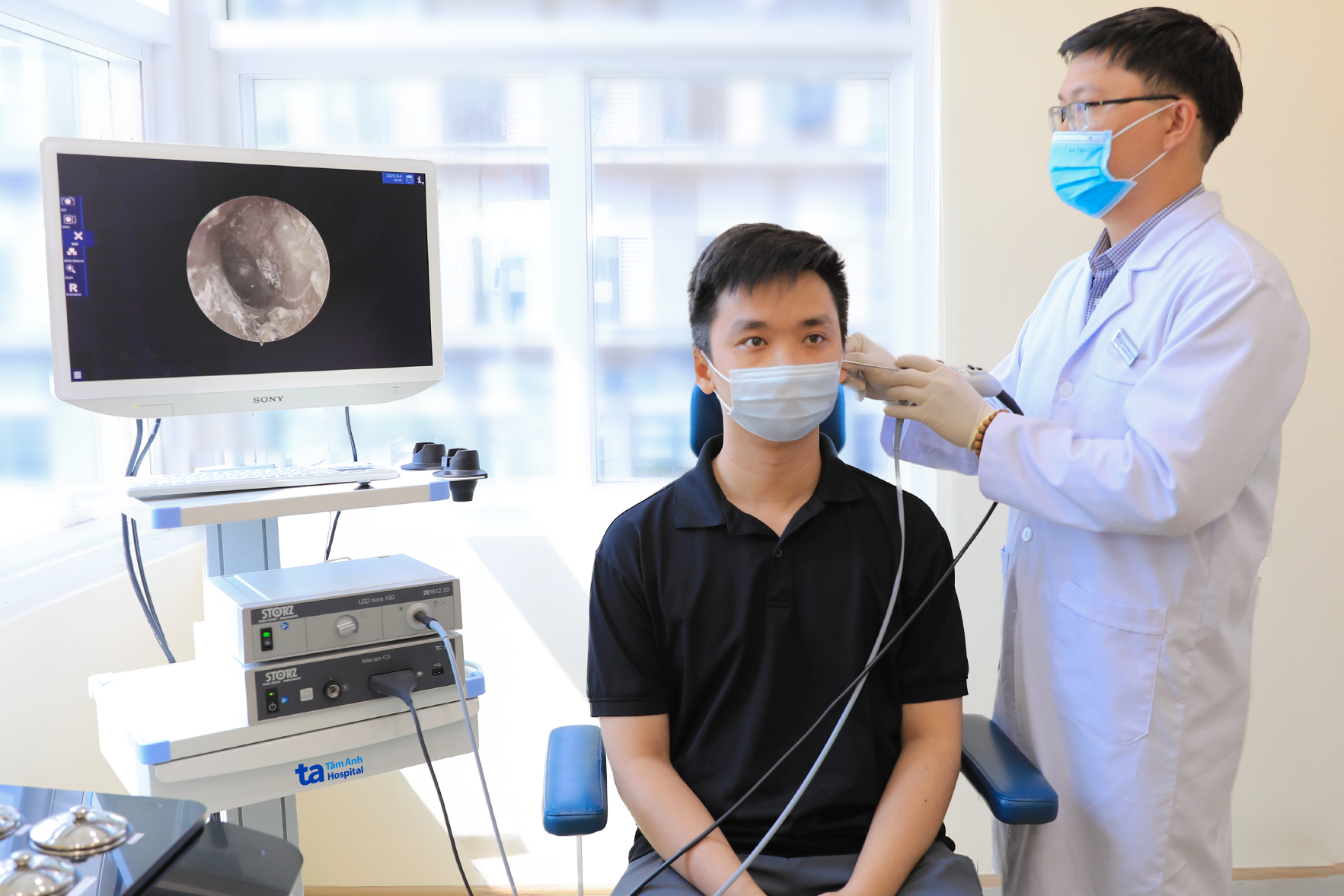Answer:
The ear, nose, and throat (ENT) structures are small cavities located deep within the head and neck, often invisible to the naked eye, such as the nasopharynx, larynx, sinuses, and hypopharynx. An ENT endoscopy uses an endoscope equipped with a camera and specialized lenses at both ends, allowing doctors to observe the deep mucous membranes, detect lesions early, and accurately diagnose diseases.
ENT endoscopes include rigid and flexible types. Rigid endoscopes (also called optics) come in various sizes and viewing angles, such as 0, 30, or 70 degrees. Flexible endoscopes have a tip that can bend up to 130 degrees, enabling doctors to clearly observe small and deep recesses of the ENT region. The images are displayed and magnified on a screen, providing doctors with a clear, direct view for assessment, diagnosis, and development of an appropriate treatment plan.
Patients undergoing an ENT examination typically follow a procedure involving medical history review, symptom analysis, clinical examination, and ENT endoscopy. Advanced endoscopes with integrated technologies can help doctors visualize abnormal blood vessel growth in suspected malignant tumors.
 |
Doctor Phat performs an ear endoscopy on a patient. Photo illustration: Tam Anh General Clinic, District 7 |
Doctor Phat performs an ear endoscopy on a patient. Photo illustration: Tam Anh General Clinic, District 7
For ENT cancers, endoscopy is a crucial tool that allows doctors to clearly observe the structures and detect suspicious lesions. Several cancers can be detected through endoscopy, including nasopharyngeal, laryngeal, nasal and sinus, tonsil, and oropharyngeal cancers. If a suspected malignancy is found, a tissue biopsy and pathological analysis are performed to confirm the diagnosis.
Distinguishing between benign and malignant lesions via endoscopy relies on professional expertise and image characteristics, such as ulcerated or cauliflower-like surfaces, easy bleeding, irregular borders, and invasion of surrounding tissue. However, not all lesions present clear signs, and biopsies are often required. For precancerous lesions, doctors recommend regular monitoring for early detection and timely treatment if there are signs of malignancy.
If you experience frequent throat inflammation or pain, consult an ENT specialist for an endoscopic examination. If any abnormalities raise suspicion of cancer, the doctor will order appropriate imaging tests or biopsies.
MSc. MD. Specialist I Truong Tan Phat
Head of ENT Unit
Tam Anh General Clinic, District 7
| Readers can submit questions about ENT diseases here for doctors to answer. |












